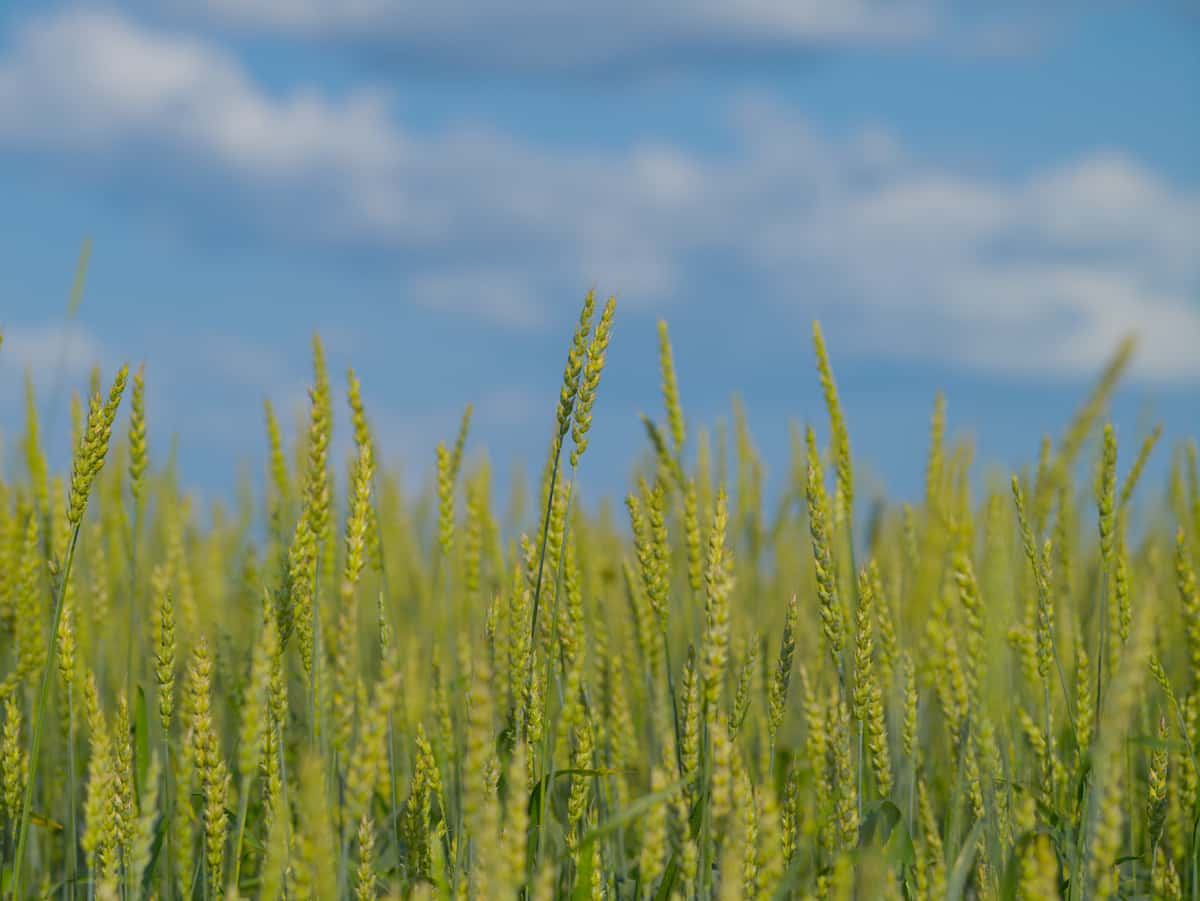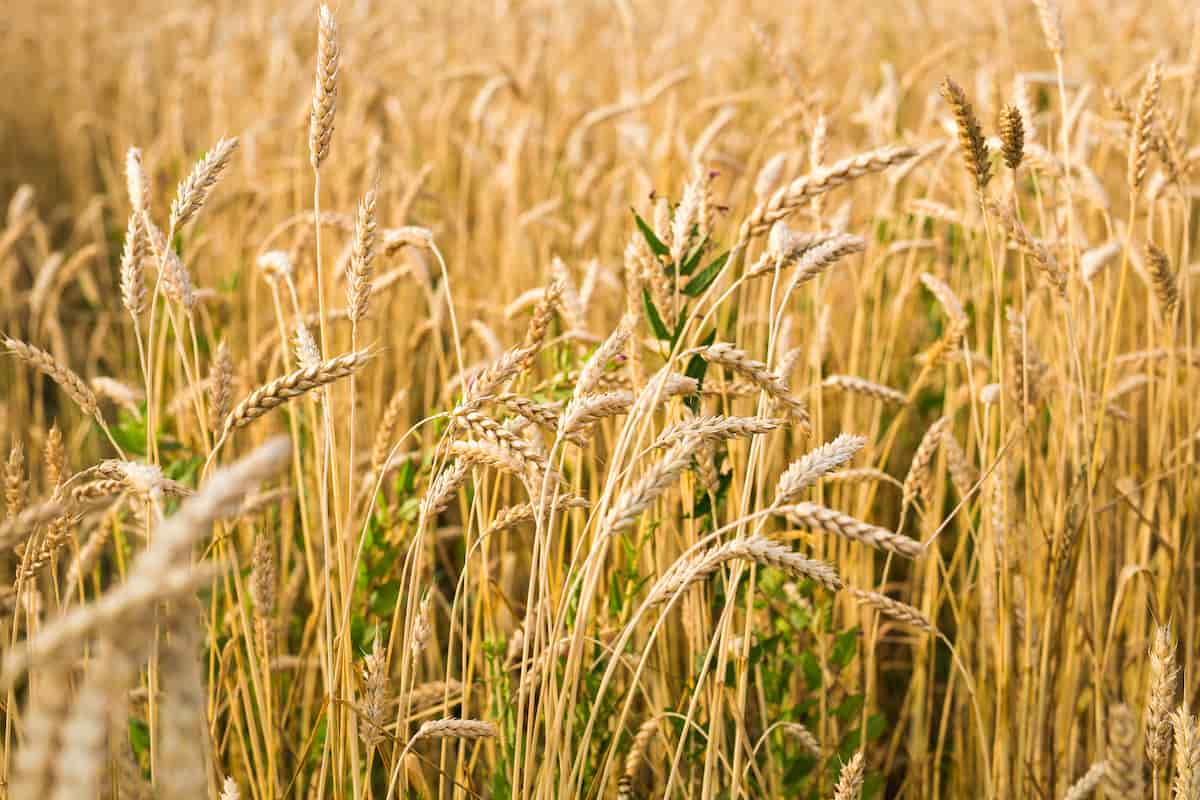Rye (Secale cereale) is a cereal grass that belongs to the Poaceae family and is closely related to wheat and barley. It is mainly used as a cover crop and forage crop but also for producing flour, bread, crispbread, beer, whiskey, and vodka. Rye is known to have general strengthening and tonic effects on the human body. It stabilizes gastrointestinal functions, relieves cough and rheumatoid conditions, and is used to heal abscesses. Additionally, Rye produces healthy cereals and medicinal purposes, such as making infusions and decoctions from its grains.

Rye Production
Best Package and Practices of Rye High Production
To achieve high production of Rye, it is essential to adopt best practices in packaging and cultivation. These include selecting the right variety, preparing the soil with sufficient nutrients, planting at the correct time, and using effective weed and pest management techniques. Additionally, it is important to harvest the crop at the optimal time and store it properly in a clean and dry environment to avoid contamination and spoilage. Following these best practices can result in successful and profitable rye production.
Land/ Field Preparation and Soil Requirements for Rye
Rye is a highly adaptable crop that can grow well on various soils. It is particularly suited to sod-podzolic soils, with an increased ability to assimilate sparingly soluble phosphorus compounds. Rye can thrive on sandy loam and highly acidic soils with a pH as low as 5.3. It is the only rabi cereal that is best suited for sandy soil. Rye is a versatile crop that can be grown successfully in many different soil types. It’s recommended to plow during the summer. Mulching fallen leaves are suggested to prevent erosion.
Temperature, Climatic, and Rainfall Requirements for Rye
Rye has a warm and temperate climate with significant rainfall throughout the year. Even during the driest month, there is still considerable rain. According to the Köppen-Geiger system, Rye’s climate is classified as Cfb. The average annual temperature in Rye is 11.1°C | 51.9°F, and the city receives around 692 mm | 27.2 inches of precipitation annually.
Propagation Method and Seed Quality for Rye
Propagation Rye is grown directly from seed and can be sown by seed drill or broadcast. The recommended depth for sowing seeds is 2.5–5.0 cm (1-2 in), with a space of 15–18 cm (6-7 in) between sections where seeds are drilled. Seeding Spreading seeds requires covering them to ensure adequate germination.
Seed Treatment for Rye
Besides choosing the right variety, selecting the optimal fungicide seed treatment is essential for Rye Seed. Value-added treatments offer several advantages, such as strong efficacy against pathogens like Snow mold, Seedling blight, Loose smut, and Stripe smut. They also promote rapid germination, optimal rooting, and uniform establishment. The low dust-off ensures low environmental emissions and operator safety, while good flowability makes the treatment easy to apply. Overall, these value-added treatments enhance the quality and yield of the crop.
Seed Rate and Spacing for Rye
For forage, the seed rate is 75-95 kg/ha; for a cereal grain, it is 55-65 kg/ha. The sowing depth is 2.5 centimeters. 20–25 cm is the row distance.
Sowing Method for Rye
Broadcast sowing and drill sowing are the two common planting methods.
In case you missed it: Foxtail Millets Production Guide: A Step-By-Step Cultivation Practices

Crop Rotation and Intercropping in Rye
In warmer regions such as Zone 7, a cover crop can be grown annually between corn and full-season beans, with a rotation of corn, Rye, soybeans, and hairy vetch. Additionally, wheat or other small grains can replace the cover crop before beans in a three-crop, two-year rotation, but careful crop rotation is required to prevent soil depletion. After a summer harvest from the Three Sisters, a mixed intercropping of Rye and vetch can renew the soil for the next growing season. Intercropping requires attentive companion planting for optimal results.
Manure & Fertilizer Applications in Rye
A combination of 30-90 kg N, 35-55 kg P2O5, and 65 kg K2O causes a reaction. ‘N’ is used twice here. Applying 15-20 kg/ha of BHC 10% or Aldrin 5% for termite management is recommended.
Weed Management and Herbicide Application in Rye
Effective weed management in Rye involves herbicide application. Herbicides should be applied at the right time and rate with proper equipment and technique. It’s important to use selective herbicides that target specific weed species while minimizing damage to the rye crop. Additionally, integrated weed management practices can enhance herbicide effectiveness and reduce the risk of resistance development.
Water Management in Rye
For optimal growth and yield, six stages of irrigation are recommended for Rye: sowing irrigation, 20-25 DAS (CRI), 40-45 DAS (Tillering), 70-75 DAS (late jointing stage), flowering stage, and dough stage (115th day). CRI and heading stages are critical, with irrigation at CRI being the top priority if only one irrigation is available. CRI and flowering stages should be irrigated for two irrigations, while CRI, late jointing, and flowering stages should be irrigated if three irrigations are available. Proper irrigation timing and management can enhance rye growth and yield.
Disease Control in Rye
Bacterial blight caused by Xanthomonas translucens results in water-soaked spots, shriveling dead leaves, yellow or brown streaks, and stunted growth in plants. The disease spreads through infected seeds and splashing water. Only certified, disease-free seeds should be used to manage this disease, and seeds should be treated with fungicide before planting.
Barley yellow dwarf virus (BYDV) causes stunted growth, yellow-green blotches at leaf tips, and leaves turning yellow, red, or purple. A few species of aphids transmit the virus. Control of aphid population and planting to avoid periods of peak aphid activity can provide some control. Loose smut caused by Ustilago tritici results in dark green or black masses instead of kernels.
To manage this disease, certified smut-free seeds should be used and treated with hot water or fungicide before planting. Powdery mildew caused by Erysiphe graminis results in patches of cottony, white-gray growth on the upper surface of leaves, which turn gray-brown. Planting resistant varieties, removing crop debris from the field after harvest, and removing volunteer wheat plants can help control the disease.
Pest Control in Rye
Aphids can cause yellow or white striped leaves, stunted growth, and sooty mold. Insecticides or insecticidal soaps can be used for control, but natural predators should be considered. Armyworms consume entire leaves and can be controlled with biological methods or chemicals. Wireworms can lead to reduced stand and girdled stems, and chemical control must be applied before planting. Crop rotation and tillage can help reduce wireworm populations.
Harvesting and Threshing of Rye
Two harvests are done for forage crops at the 50–55th day and dough stage. Harvesting for the forage cum grain produce harvest between days 50 and 55.
Rye Yield per Acre
Grown solely for fodder, the crop yield can reach 50-55 tonnes per hectare. However, if grown for dual purposes, the yield would be 25 tonnes per hectare of fodder, 2.5 tonnes per hectare of grain, and 2.5 tonnes per straw.
In case you missed it: Kodo Millets Production Guide: A Step-By-Step Cultivation Practices

Conclusion
Rye is a hardy and versatile crop that can be grown in various soil types and climates. Its various uses, including as a cover crop, forage crop, and grain crop, make it a valuable addition to any farming operation. With proper cultivation practices, such as selecting the right seed variety, managing soil fertility, and controlling pests and diseases, farmers can achieve high yields and quality rye crops.
- Ultimate Guide to Ossabaw Island Hog: Breeding, Raising, Diet, and Care
- Ultimate Guide to Juliana Pig: Raising Facts, Size, Diet, Care, and Lifespan
- Raising Lleyn Sheep: Disadvantages, Price, Uses, Characteristics, and Care
- Ultimate Guide to Meishan Pig: Breed Facts, Breeding, Raising, and Care
- Ultimate Guide to Teacup Pigs: Raising, Diet, Lifespan, Cost, and Care
- Guide to Raising Poll Dorset Sheep: Facts, Profile, Characteristics, Uses, and Care
- Ultimate Guide to Bighorn Sheep: Characteristics, Diet, Lifespan, Breeding, and Lifecycle
- Ultimate Guide to Raising Katahdin Sheep: Farming Facts, Breed Profile, Uses, and Care
- Ultimate Guide to Raising Oreo Cows: Belted Galloways Farming Facts, Profile, Uses, and Care